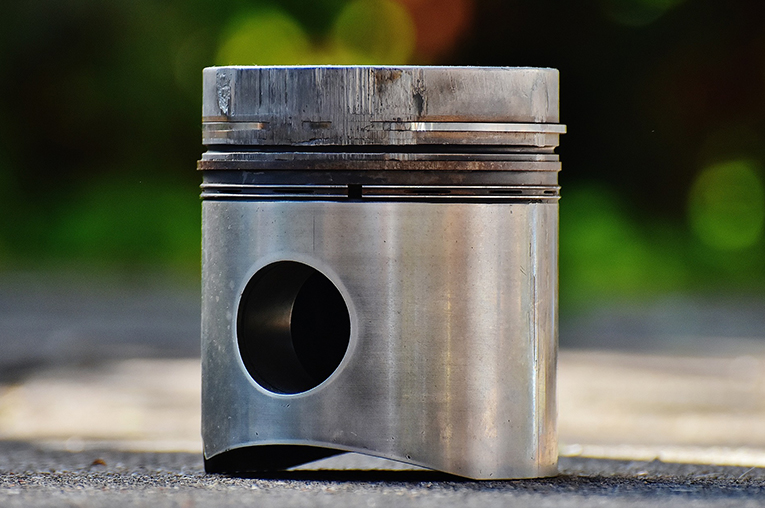Introduction
Engine piston rings are mechanical components used for sealing combustion chambers in internal combustion engines. They provide an effective gas seal between the piston and cylinder wall, helping to maintain engine performance and minimize fuel consumption and emissions. They also play a vital role in maintaining optimal engine power output, controlling oil consumption, and preventing blow-by of explosive gases.
If the piston rings fail, the vehicle will experience multiple issues, which may ultimately damage the engine in the long run, especially if the same problem remains unfixed. So, even though piston rings are one of the least expensive components of the car engine, they are essential to maintain proper vehicle operation.
Here’s a comprehensive guide that shares the primary symptoms to showcase the engine’s bad or worn piston ring and the proactive steps to prevent such a scenario.
Symptoms of Bad Piston Rings
1.A Surge in engine oil consumption
When the piston rings fail, they cannot keep the oil from leaking into the cylinder. Gradually, all the engine oil will leak into the cylinder, resulting in a drop in the engine oil level, further leading to refilling the engine oil more frequently.
For instance, if a change in the engine oil is required every 5,000 miles (8,046.72 km), a faulty piston ring would demand a change of engine oil every 3,000 miles (4,828.03 km). So, if you witness such a scenario, save time booking your appointment with a professional auto mechanic. The mechanic will then diagnose the engine’s valve seals and recommend replacement if necessary.
2.Oil leakage
When engine piston rings fail, the pressure inside the crankcase becomes high. As a result, the seals around the engine begin to fail and therefore start leaking oil. So, checking the crankcase pressure for any oil leaks around your engine is important.
To check the crankcase pressure, start the engine and keep it on standby. Then start opening the engine oil cap carefully. Ideally, there should not be any pressure. But if the oil cap flies away along with some smoke, it is a dead giveaway that the piston rings are out of order.
3.Increased exhaust smoke
A significant amount of smoke emission from the vehicle’s exhaust is another indication of faulty piston rings. The smoke is likely dense and displays a blue or dark grey colored smoke, accompanied by a distinct odor of burning oil.
This occurrence of blue or dark grey exhaust smoke is a result of engine oil leakage into the combustion chamber. When leaked oil is burned, it produces distinctive colored smoke from the vehicle’s exhaust system.
4.Diminished Acceleration
The piston rings help regulate the lubrication and compression of an engine. When these piston rings wear out, the engine loses its ability to maintain adequate compression and lubrication, leading to a loss of acceleration power. As a result, the vehicle may experience trouble accelerating when the accelerator is pressed, with a slower response time from the engine than usual.
Additionally, reduced acceleration can also take place due to spoiled valve seals. Performing a compression test helps in identifying the damaged engine’s piston rings. While the high compression levels indicate the presence of damaged valve seals, low compression levels indicate worn piston rings.
5.A Decline in Overall Vehicle Performance
Since deteriorated piston rings lead to decreased acceleration for your vehicle, the inefficiency in engine rotation can result in engine stalls. In extreme cases, the vehicle may lose all engine power, compelling towing it in case of breakdown during travel. However, more commonly, a general reduction in engine performance may be observed.
Remember that a complete engine stall occurs as a result of neglecting the early warning signs of faulty piston rings and failing to seek the advice of a professional mechanic. Regular inspection and maintenance can prevent such outcomes.
Conclusion
Several potential factors may lead to the wear and tear of the engine piston rings. While not all of these can be prevented, regular maintenance and prompt attention to early warning signs of bad piston rings can go a long way in ensuring the health and efficiency of your vehicle’s engine.
Repairing damaged or faulty piston rings require technical expertise and significant effort, making it a task that is best performed by an experienced professional mechanic.
FAQs
1. How long do engine piston rings last?
The engine piston rings’ lifespan largely depends on the engine’s longevity. On average, engine piston rings are estimated to last between 100,000 miles (160,934.4 km) to 150,000 miles (241,401.6 km). But the average life of a piston ring is anywhere from 100,000 miles (160,934.4 km) to 150,000 miles (241,401.6 km).
2.Do you need to use lubricants before installing a piston ring?
Yes, lubrication of piston rings with oil is important. Not using lubricants during installation can lead to the engine cylinder wall releasing contaminants into the oil.
3.Is it possible to replace piston rings without removing the engine?
Despite the possibility of replacing piston rings without removing the engine, it is recommended to remove the engine cylinder head and oil pan while replacing the piston rings for ease of the replacement task.
4. Is it possible to drive a car with a bad piston ring?
No, driving a vehicle with a damaged engine piston ring is not advisable. This can cause further damage to the cylinder walls, potentially leading to the need for a complete engine block replacement.
5.Does a faulty piston ring cause the engine misfires?
Yes, a malfunctioning engine piston ring can result in engine misfires. This is often indicated by white, dense smoke from the engine, indicating an improper containment of compressed gases.

A top ranking student throughout, Akshay joined the family business right after graduation in 2006. After working for over 10 years in Agra Engineering Co, he decided to start his own company. Now as a partner in this new company he looks after business development and vendor management. A keen fitness enthusiast he tries new forms of exercise – crossfit, calisthenics, pilates, yoga and swimming. He’s an avid golfer as well – one of his many hobbies.








One thought on “Symptoms Of Bad Piston Rings And FAQ”
Comments are closed.